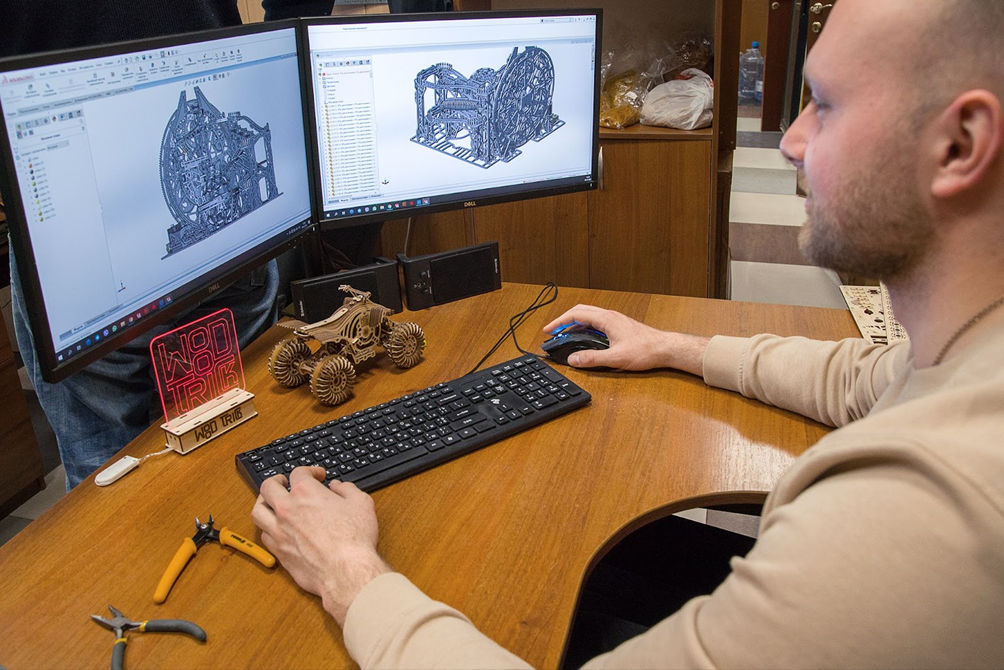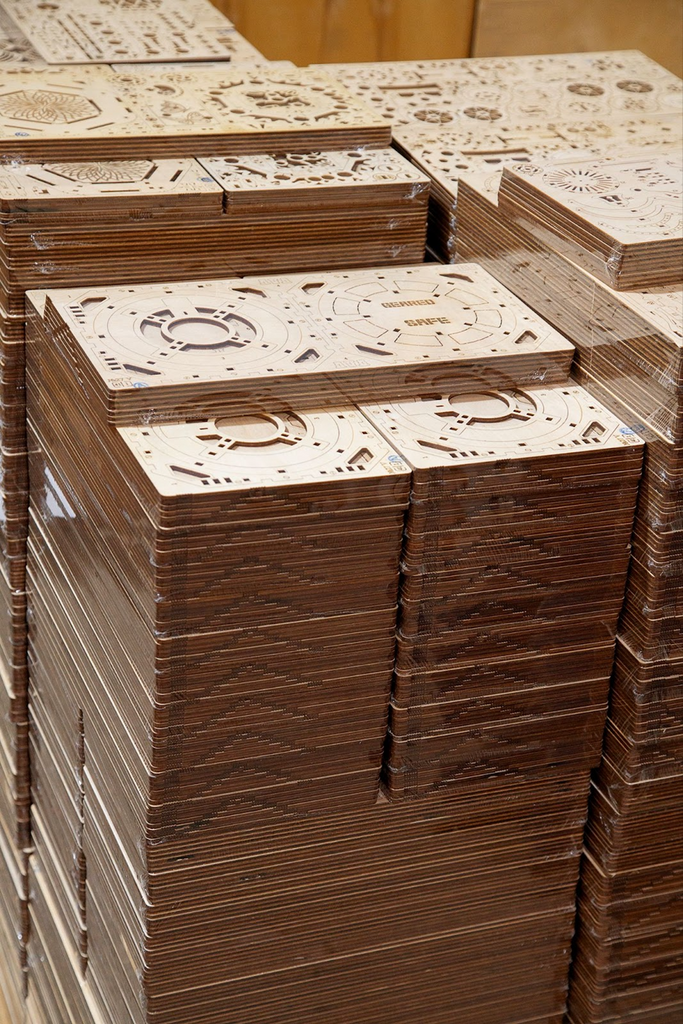
Come sono realizzati i puzzle in legno 3D: una guida passo passo
3D wooden puzzles are a popular pastime and an enjoyable challenge for people of all ages. These intricate, three-dimensional puzzles are not only a pleasure to solve but also showcase the artistry and craftsmanship that goes into their creation. Let's take you through the step-by-step process of how 3D wooden puzzles are made, from the initial design to the final product.
Concept and Design

The first step in creating a 3D wooden puzzle is to come up with a concept and design. This can be anything from a simple geometric shape to a complex representation of an animal, vehicle, or famous landmark. The designer will create detailed sketches and drawings of the puzzle, outlining the individual pieces and their connections. They will also consider the overall structure, ensuring the completed puzzle is stable and visually appealing.
Choosing the Wood
Once the design is finalized, the next step is selecting the wood for the puzzle. Many 3D wooden puzzles are made from high-quality hardwoods, such as maple or birch, which are known for their strength, durability, and attractive grain patterns. The chosen wood will be kiln-dried to remove any excess moisture, ensuring that the puzzle pieces will not warp or change shape over time.
Cutting the Pieces
With the design and wood selected, the puzzle pieces can now be cut. This process typically involves using a laser cutter, which can precisely and accurately cut intricate shapes and details. The laser cutter works by directing a high-powered laser beam onto the wood's surface, burning through the material to create the desired shape. This method results in clean edges and minimal waste, producing high-quality puzzle pieces. But there are two other methods:
- Scroll Saw Cutting: This technique involves using a scroll saw, a specialized tool with a thin, reciprocating blade, to cut intricate patterns and shapes. This method allows more control and precision than laser cutting but can be more time-consuming.
- CNC Routing: Computer Numerical Control (CNC) routing involves using a computer-controlled cutting machine to carve the puzzle pieces. This method provides high levels of precision and accuracy, making it suitable for complex designs.
Sanding and Smoothing

Once the pieces are cut, they must be sanded and smoothed to remove any rough edges or imperfections. This is an essential step, as smooth surfaces ensure the puzzle pieces fit together seamlessly. The sanding process may involve using sandpaper, sanding blocks, or even a power sander, depending on the size and complexity of the puzzle.
Finishing the Wood
After sanding, the puzzle pieces are treated to protect the wood and enhance its natural beauty. There are many different finishes available, such as oils, waxes, and varnishes, providing a different level of protection and visual appeal, but not each of them is good for 3D Wooden Puzzles.
- Oils: Penetrating oils, such as tung oil or Danish oil, seep into the wood's pores, protecting it while preserving the wood's natural appearance.
- Waxes: Waxes, like beeswax or carnauba wax, can be applied to create a soft sheen and add a layer of protection to the wood.This option is the most sparing and correct for the final processing of the product, since it does not spoil the appearance and does not interfere with the functionality of the mechanism.
- Lacquers: Lacquers, such as polyurethane or lacquer, create a hard protective coating on the surface of the wood, providing increased durability and resistance to moisture. But there is a huge minus in the use of varnishes for processing - they give the product additional weight, which may later have a bad effect on the functionality of mechanical puzzles.
The finishing process may involve applying one or multiple coats and buffing the surface between each application for a smooth, even finish.
Assembly and Quality Control

Before the entire puzzle series is cut, packaged and shipped, the manufacturer will assemble the 3D wooden puzzle to ensure that all the pieces fit together correctly and that the final product meets the desired quality standards. This step allows the manufacturer to identify and address any issues or defects in the puzzle, ensuring customers receive a high-quality product.
Packaging and Shipping

Once the puzzle has passed quality control, it is disassembled, and the individual pieces are carefully packaged in a box or protective case. The packaging may include assembly instructions, a picture of the completed puzzle, and any necessary tools, such as a small wooden mallet or glue. Finally, the packaged puzzle is shipped to retailers or directly to customers.
Conclusion
The process of creating a 3D wooden puzzle involves a combination of artistry, craftsmanship, and attention to detail. From concept and design to cutting, sanding, and finishing, each step is crucial in producing a high-quality and enjoyable puzzle. Next time you tackle a 3D wooden puzzle, take a moment to appreciate the skill and effort that went into creating this intriguing and engaging pastime.








